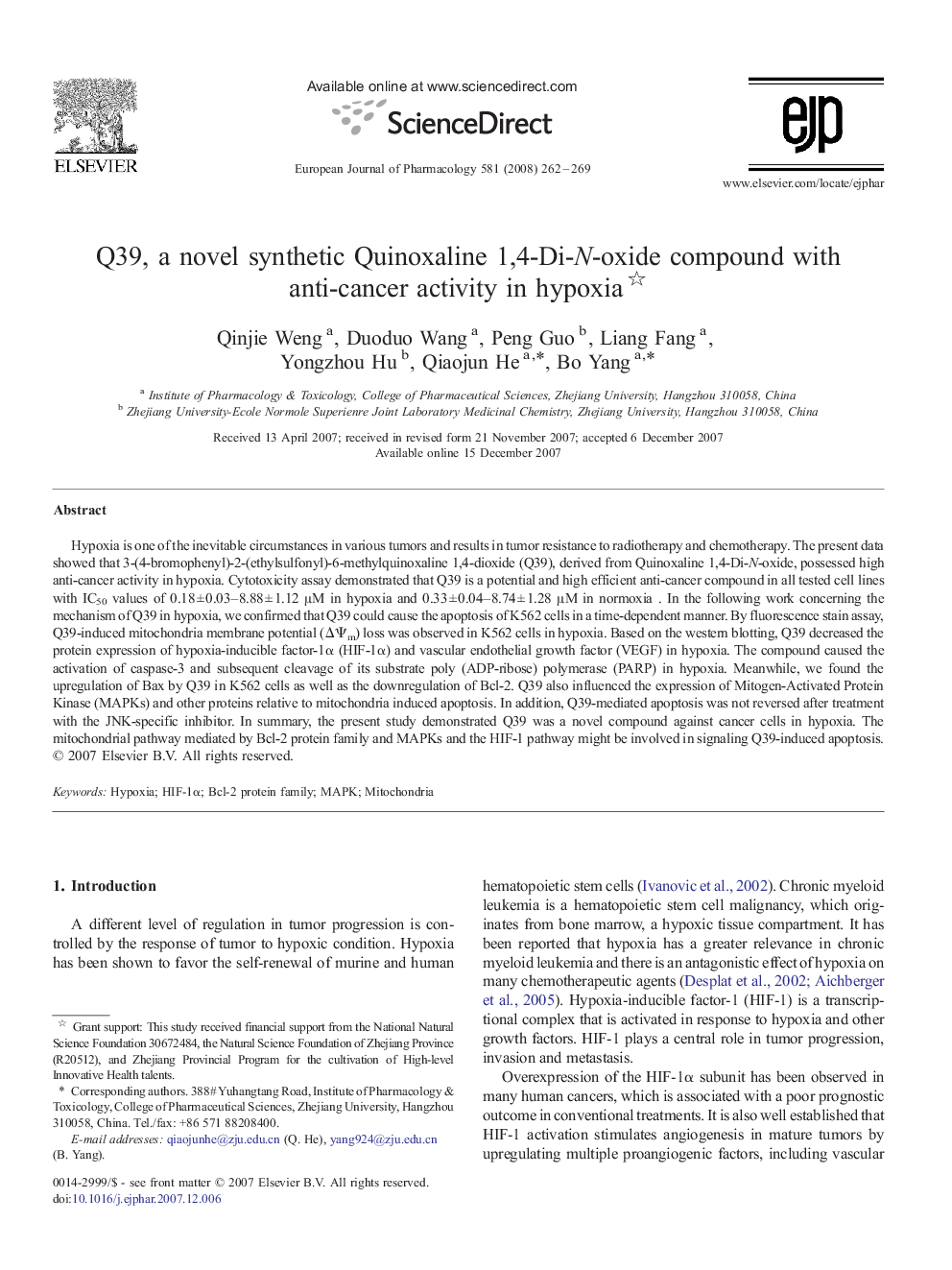| Article ID | Journal | Published Year | Pages | File Type |
|---|---|---|---|---|
| 2535434 | European Journal of Pharmacology | 2008 | 8 Pages |
Hypoxia is one of the inevitable circumstances in various tumors and results in tumor resistance to radiotherapy and chemotherapy. The present data showed that 3-(4-bromophenyl)-2-(ethylsulfonyl)-6-methylquinoxaline 1,4-dioxide (Q39), derived from Quinoxaline 1,4-Di-N-oxide, possessed high anti-cancer activity in hypoxia. Cytotoxicity assay demonstrated that Q39 is a potential and high efficient anti-cancer compound in all tested cell lines with IC50 values of 0.18 ± 0.03–8.88 ± 1.12 μM in hypoxia and 0.33 ± 0.04–8.74 ± 1.28 μM in normoxia . In the following work concerning the mechanism of Q39 in hypoxia, we confirmed that Q39 could cause the apoptosis of K562 cells in a time-dependent manner. By fluorescence stain assay, Q39-induced mitochondria membrane potential (ΔΨm) loss was observed in K562 cells in hypoxia. Based on the western blotting, Q39 decreased the protein expression of hypoxia-inducible factor-1α (HIF-1α) and vascular endothelial growth factor (VEGF) in hypoxia. The compound caused the activation of caspase-3 and subsequent cleavage of its substrate poly (ADP-ribose) polymerase (PARP) in hypoxia. Meanwhile, we found the upregulation of Bax by Q39 in K562 cells as well as the downregulation of Bcl-2. Q39 also influenced the expression of Mitogen-Activated Protein Kinase (MAPKs) and other proteins relative to mitochondria induced apoptosis. In addition, Q39-mediated apoptosis was not reversed after treatment with the JNK-specific inhibitor. In summary, the present study demonstrated Q39 was a novel compound against cancer cells in hypoxia. The mitochondrial pathway mediated by Bcl-2 protein family and MAPKs and the HIF-1 pathway might be involved in signaling Q39-induced apoptosis.
